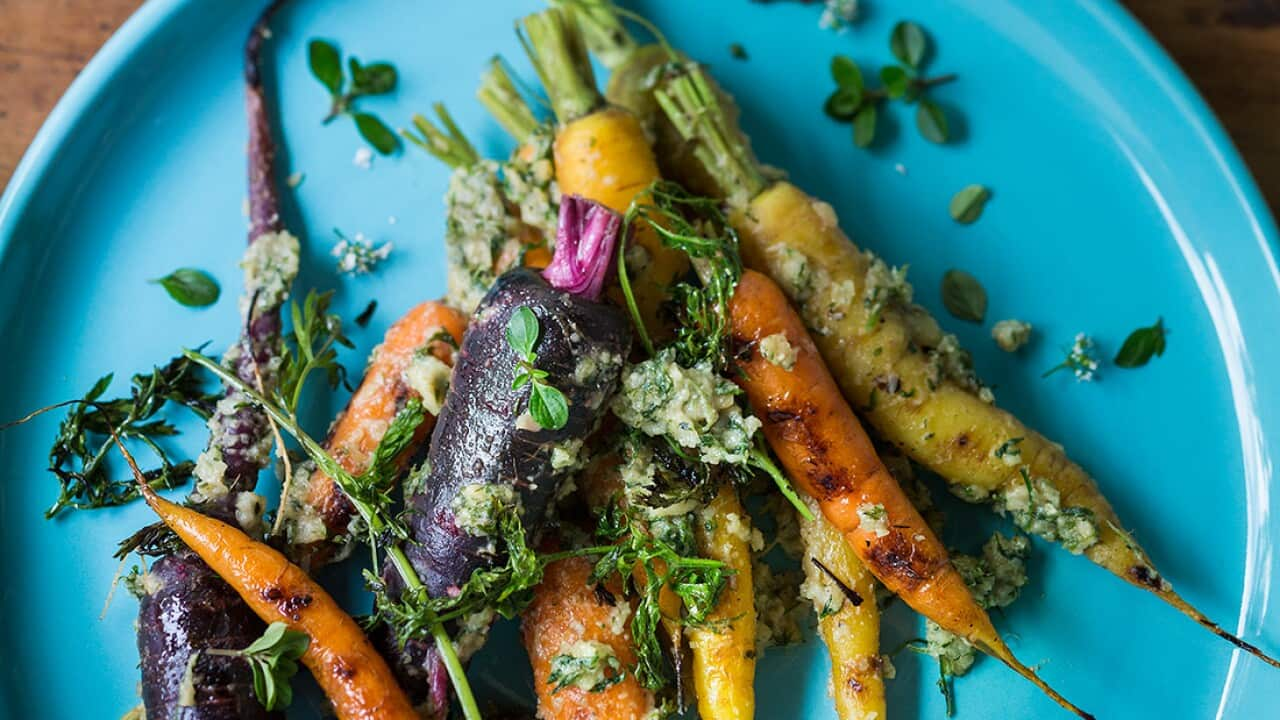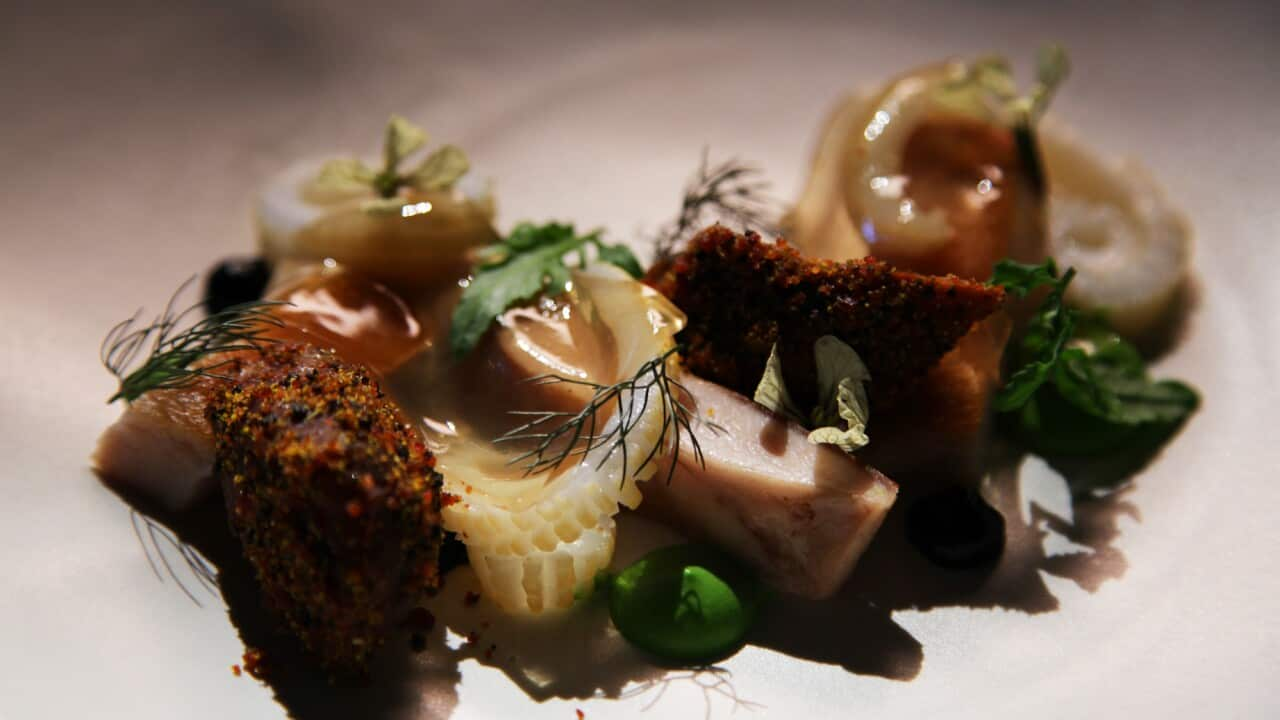One of the most fascinating, delicious and yet contradictory ingredients in the world is garlic.
On one end of the spectrum, there’s the garlic we're familiar with: our everyday white supermarket variety, used in a universal rainbow of international cuisines. On the other end: the exotic black garlic, sold in Australia for .
So how much difference is there between the two species (beyond the price tags, of course)?
Although white and black garlic offer contrasting flavour profiles and culinary uses, the fact is all black and white garlic start life as the same product.
“You don’t grow black garlic, as black garlic starts as normal white garlic,” says John Pye of , who has been selling black garlic to the public for over five years.
“Nothing is added to it to turn white garlic black. What happens though, in simple terms, is that the white garlic goes into a machine – think of an oven. In this oven, there’s a constant and very specific temperature and humidity level. The white garlic we produce goes in there for various amounts of time and becomes black garlic.”
Pye says Bredbo’s black garlic is ‘fermented’ in the oven for 60 days. He uses the term ‘ferments’ loosely because, technically, nothing is added to the white garlic to turn it dark. Instead, there’s a chemical process called the at play.
Just as you caramelise or brown food during cooking, the Maillard reaction that occurs in the creation of black garlic involves a chemical interaction and reducing sugars that turns the cloves a different colour. “That is what makes it black.”
Pye explains another rarity used in the creation of black garlic. His company uses single cloves of white garlic – , which do not contain any segments – in the production process.
“The reason I swung towards a solid bulb is that the chefs prefer it. It prevents them having to cut the garlic up and peeling each clove.”
Pye says monobulbs are often discarded by producers in the effort to create perfect-shaped garlic for supermarkets. But rather than see imperfect garlic go to waste, Pye value-adds to the product and makes them black.
Although white and black garlic offer contrasting flavour profiles and culinary uses, the fact is all black and white garlic start life as the same product.
“The monobulb is an anomaly. Sometimes it just occurs in nature and [farmers] won’t know why it occurs. You can have a crop where… half the produce is like that, while in another year, you’ll have a crop where there’s hardly any monobulbs."
“I source my monobulbs from a grower in NSW who deliberately tries to produce monobulbs for me. Another grower gives me whatever single bulbs of garlic he grows.” Currently, Bredbo produces around one tonne of black garlic a year.

Black garlic: the key ingredient in the Darker than Darkness ramen at Sydney's Rising Sun Workshop, created to help launch Young Henrys' new Motorcycle Oil beer. Source: Young Henrys
And it tastes like … black garlic
So what does black garlic taste like?
“The best analogy to describe the flavour of black garlic is that it tastes like an ageing cheese,” says Richard Ko, who looks after the company’s marketing and product development.
“There’s a reason why you age cheese: to bring out its unique flavours. Well, we do the same with garlic, turning it black to bring out its taste. Black garlic has the texture of black jellybeans and flavours that linger like molasses and balsamic vinegar.
“It does not have the raw brute taste of raw garlic. It’s not overpowering. Black garlic has real sweetness to it.” Popular in various Asian cuisines, black garlic likely originated in Korea where it was developed as a health product and manipulated so that people could experience the immunity benefits of garlic – its sweetness made it easier to consume raw.
Popular in various Asian cuisines, black garlic likely originated in Korea where it was developed as a health product and manipulated so that people could experience the immunity benefits of garlic – its sweetness made it easier to consume raw.

Black garlic is sweeter than its white counterpart – and a versatile ingredient. Source: Getty Images
Peter Kuruvita uses organic black garlic from to make a dessert on his , which is currently airing on SBS on Thursdays at 8pm. He infuses heirloom strawberries with black garlic slices in the saucepan. The sweet mix is then used with caramelised hazelnuts to top a .
Ko advises that you eat black garlic raw, shaved or sliced and placed on your favourite dish to enhance its flavour.
“Black garlic should become the hero ingredient in a dish rather than being blended or fried like normal garlic because if you do, you won’t really be able to taste it.
“Instead, you can slice it up and have it, as you would serve relish, on a plate of cheese. Or you can toss it into a salad. My background is Chinese and I grew up on congee. So I just put slices of black garlic in my chicken congee to change the flavour profile of the dish.”
Black garlic can be eaten in so many ways. But, Pye adds, the main objective when adding black garlic to a dish is to respect the ingredient. Make sure you use it in a way where you can recognise and savour its unique flavours.
“We like to think of black garlic as the truffle of the garlic industry,” says Pye.
“It’s another ingredient that can be eaten on its own, just as you would do with cheese. Black garlic is unique. It’s not a substitute for any other food.”
airs 8:30pm, Wednesdays on SBS Food or stream it on on . Visit the for recipes, videos and more.




